
IN CONVERSATION WITH FATIMA NJAI & JEROME SYDENHAM
Interview by Vivien Schleich
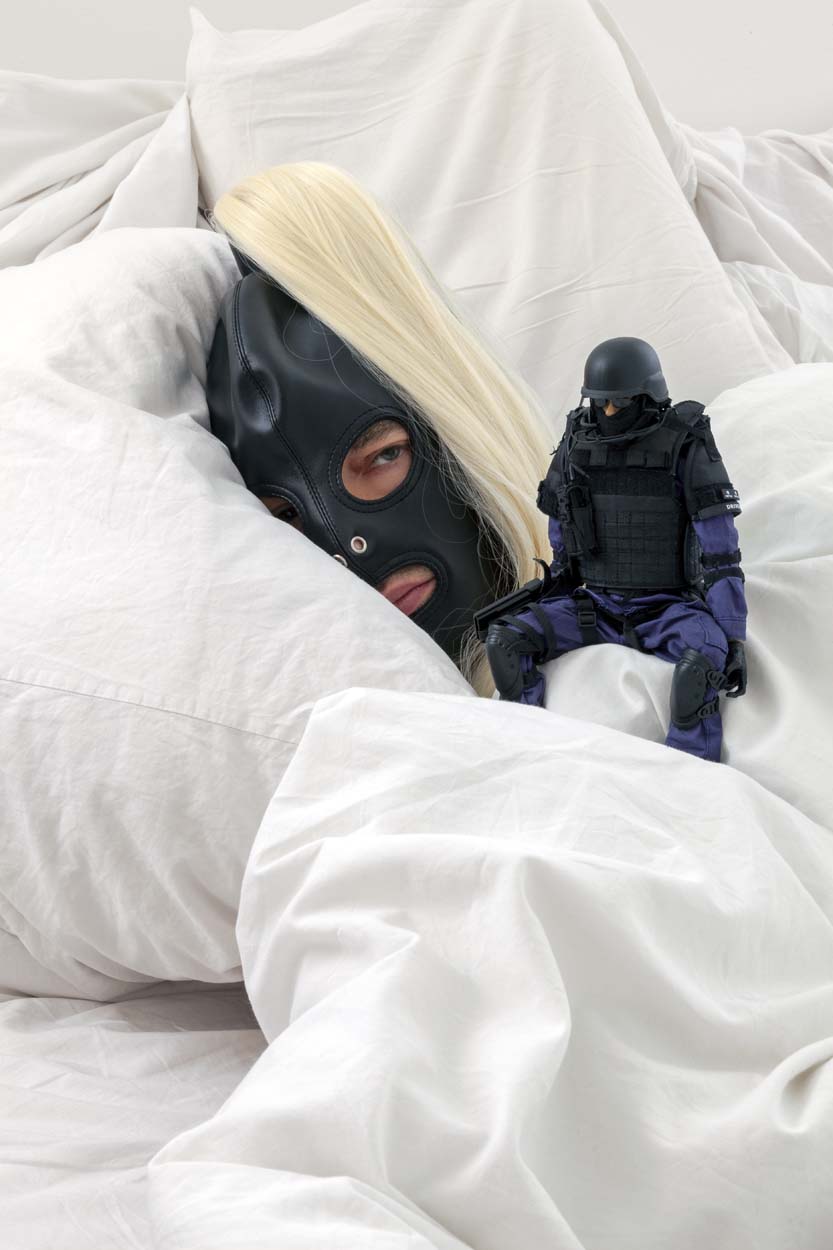
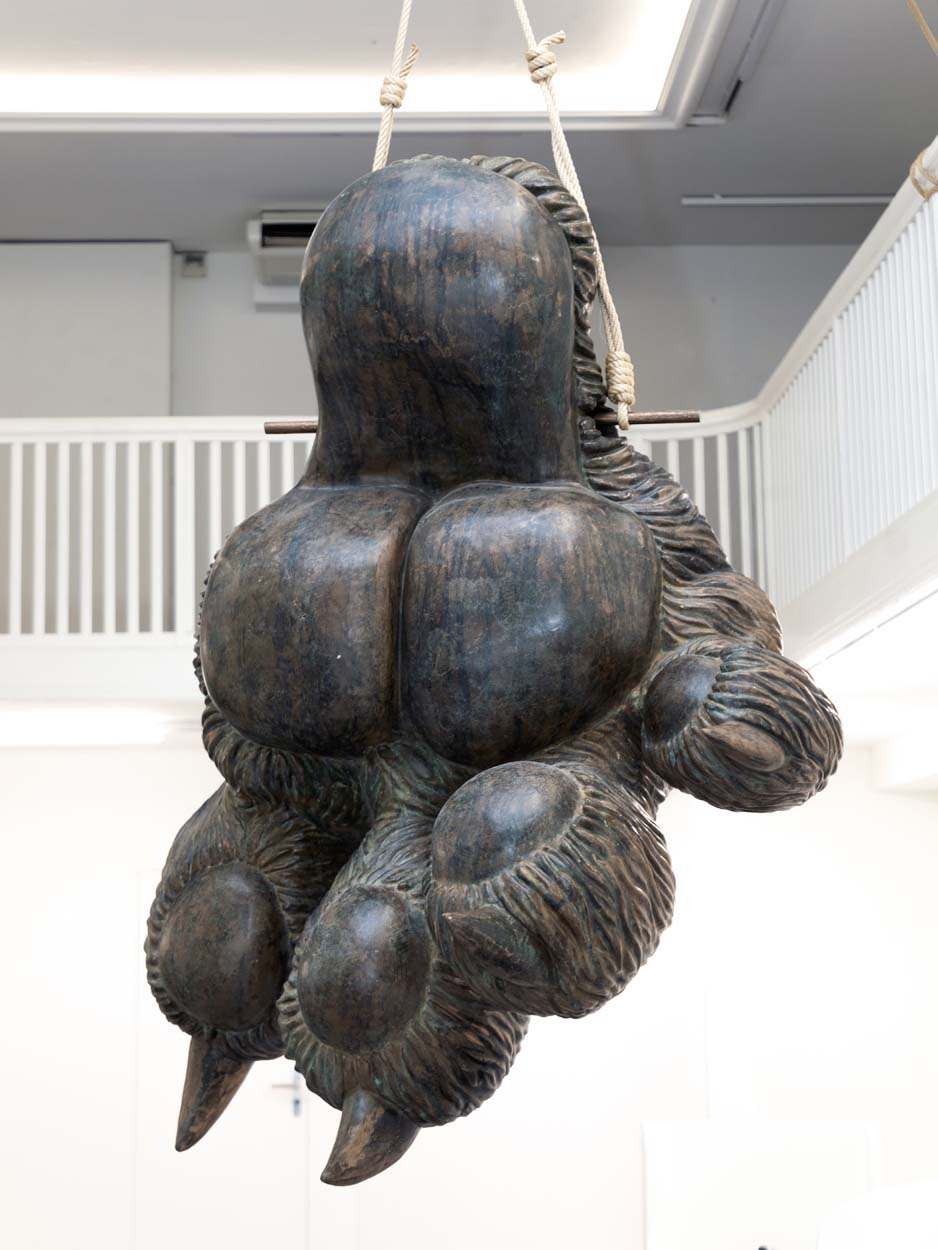
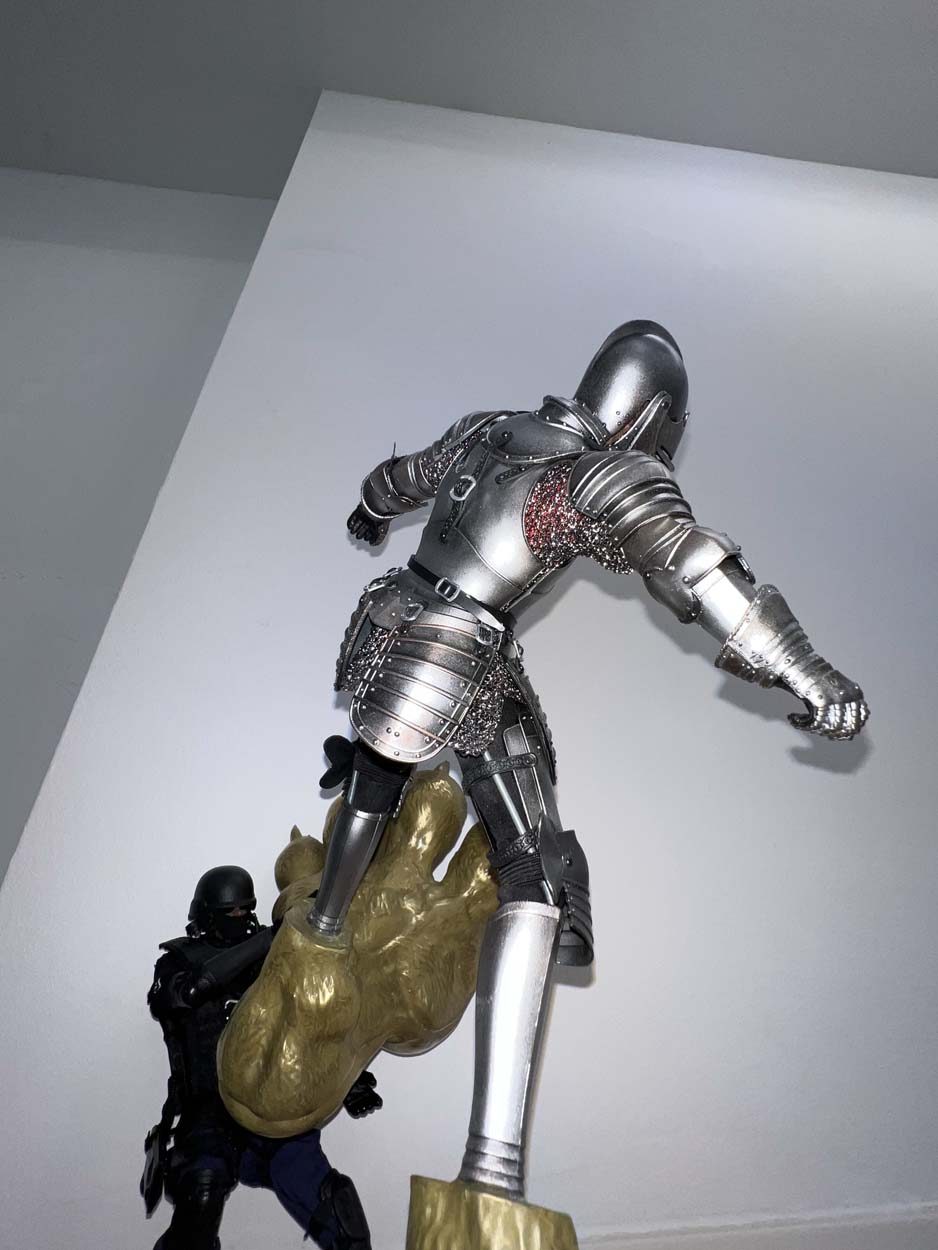
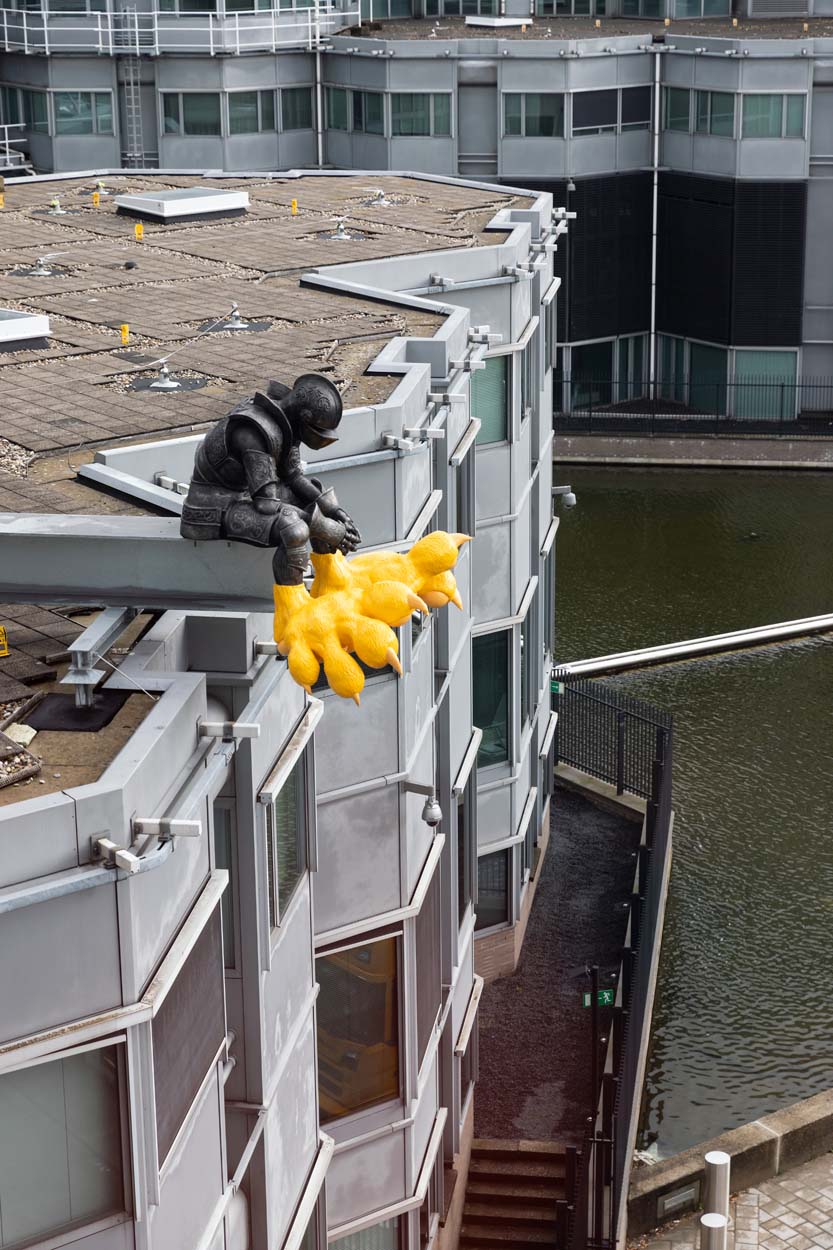
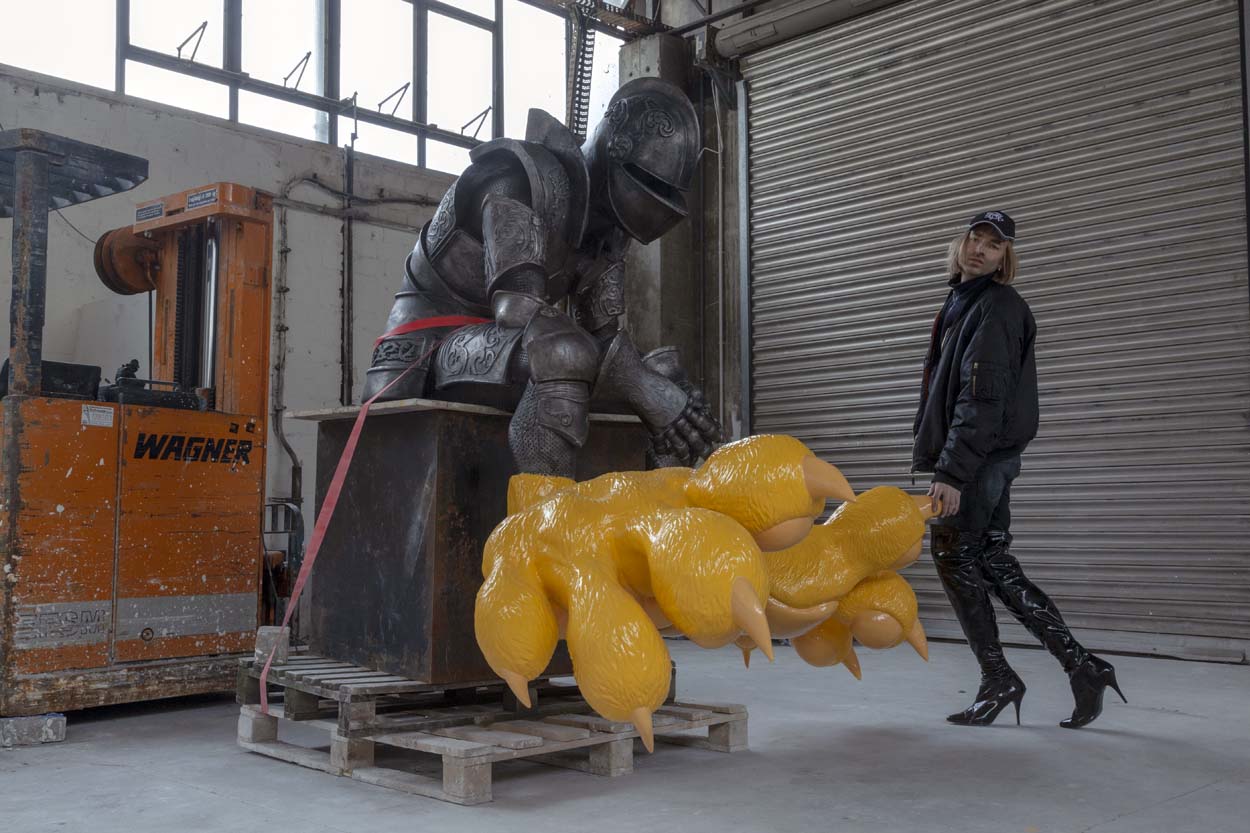
His art is multimedia and multithematic. For his installations and large-scale exhibitions, Anne de Vries combines different approaches, references and superimposes them. Creates a dialogue. For his last exhibition, Day Care Drill in Zurich, the artist transformed the space into a day care center for adults. Now he is working on the interior of the sanitation system in a Berlin club, which we will soon be able to view.
Anne de Vries: It says that as the website description in Google, somehow. I am not entirely sure how this became so prominent there; I don’t like it, it needs to go.
I like to scribble on paper, and sometimes this makes it into a PDF – that is where everything starts for me. I love all kinds of art, but the art that I am able to make is the kind of art that is like an experimental sandwich. It has quite a simple appearance, but with a stack of diverse ingredients inside. Research, mixed media, and a mix of cultural references. Sometimes, I feel like a curator juxtaposing my own dispersed ideas and observations and helping force them into this relationship with one another, in a way that is a little bit exciting to have a taste.
“Some people need to make up their own stories just to be able to go against this pushy world around them.”
It is risky to do art, but for me, it is also dangerous to not do art. I did other things, too, but without art, I feel quite disconnected. Some people need to make up their own stories just to be able to go against this pushy world around them.
This show is set up as a day care for adults, where tropes behave on the border of toys and statues. It starts with an interest in role play and alter egos, but in the broadest sense. And in particular, as a vernier to look at sculpture today. Here, sculpture is something between symbols, signifiers and mood boards that have to do with personification instead of fixed identities.
This day care is in theory a “play space” and the installations are there to be animated and performed with. The different batches of components are there to project and “play out” one’s own fantasies. Ultimately, it is about infantilizing the representation of power structures and the symbols that come with them.
This particular contribution was requested by the curator, who had a clear idea of what he wanted to present in this exhibition. He knew these older works, which I have been making over a long period of time, and they have not much to do with electronic music besides stylistically, maybe. But this was the first time the curator Adriano Rosselli and I worked together. What I remember most is coming into that stunning Kraftwerk building and thinking wow, what could you do with a space like this? It took a moment to find an answer, but it was the seed from which we came up with “Stomping Grounds” years later.
Even though I make work with the fencing that is used at the entrance of the most massive dance events and I see the changes, I am not so concerned with actual micro-management in the queue of a venue. I prefer to keep some distance and allow myself to project my own ideas into just a few of the phenomena that have the potential to help illustrate a whole other theme.
I quite like this quote; our dreams and desires are not disconnected from the reality we are in, so in that sense, the answer is yes. I try to pay attention. In that sense, I don’t set a starting point or an end goal and I don’t try to be smart around these bigger themes – it often gets much more interesting when I don’t and let it happen to a certain degree. But next to that, I also commit to spending time with ideas and I do my research.
My favorite time I had with philosophy was when I didn’t fully understand it too well; this gave me tools to articulate my own observations first and stimulated my own perspectives. By the time you get a bit deeper into it, figuring out the correct historical interpretations and linguistics, there is a point where it becomes something more static. For me, it is more radical to grant myself and others a little bit of freedom to stay in this state of fluidity, engaging one’s own experiences and associations. What I have done is an attempt to reinduce this early stage.
“To me, something more schizophrenic and fluid, perhaps self-contradicting, feels more real. Connecting different cultural spheres and ways of thinking.”
I thought so for a moment, but honestly, nah, I am not trying to be a philosopher, I don’t fully want to understand what I am trying to do, and in many cases that there are to be made, we all already know them and they don’t need art. In art, being consistent can come off a bit simple and a bit too convenient; I don’t really believe in it. To me, something more schizophrenic and fluid, perhaps self-contradicting, feels more real. Connecting different cultural spheres and ways of thinking.
Start with a general overview.
Although I am inspired by a few thinkers, what I have done with theory has very little to do with academia. All I do is make a few works that included such texts, but in the most unconventional way, really. One of the most prominent ones entailed a selection of essays (that already made their way into the art world) to be rewritten in a style it could be performed and recorded by a typical hardstyle voice actor. It is an ongoing experiment with this new format, different from traditional formats such as essays, lectures, documentaries and so on. To sincerely present a concept in this way was close to impossible. The problem is most of the time, it came across too pretentious, and the hardstyle and hardcore scene would not accept it. But, sometimes it worked and it felt important. The hardstyle track format is, to me, the most emotionally conflated format and the narration is mostly there to help create a build-up to end with a punchline, before the bass kick drops and the crowd explodes, and tricks the crowd into theoretical consensus.
“I think this is the irony of learning how to make your own art. You not only need to establish a conversation with yourself, but you also need to create an entire language.”
Becoming an artist in the context of an institution can certainly help to be exposed to different ideas and attitudes, to learn using equipment and techniques, to find a community to share ideas, etc. All of this is very valuable. But to really develop a level of autonomy, you will have to break free from the horde at one point. I think this is the irony of learning how to make your own art. You not only need to establish a conversation with yourself, but you also need to create an entire language. If you are not doing this, then you are probably taking part in a more general cultural production, which can also be great – it is probably more social and rewarding, and a little bit safer and closer to society.
My next show or perhaps event coming up is a large-scale installation inside Trauma club in Berlin – or, actually, I should say intervention of the entire plumbing system and interior. We have great ambitions and I hope we manage to realize this optimally. It will open during Berlin Art Week at the end of April for about 1 month, with several events and performances. Come join us!

Interview by Vivien Schleich

From grains of sand to towering sculptures, Jeewi Lee's work transcends the boundaries…
Interview by Marcus Boxler

Take the vibe of a techno club at 4 am, a touch of 90s nostalgia and humor, paired with a…
Images courtesy of GASM, OR? Words by Antonia Mittmann and Ann-Kathrin Riedl